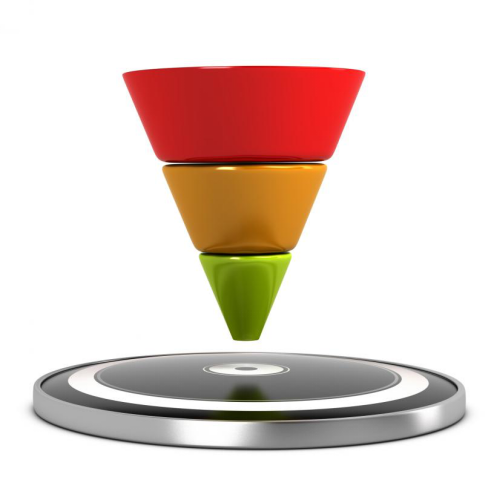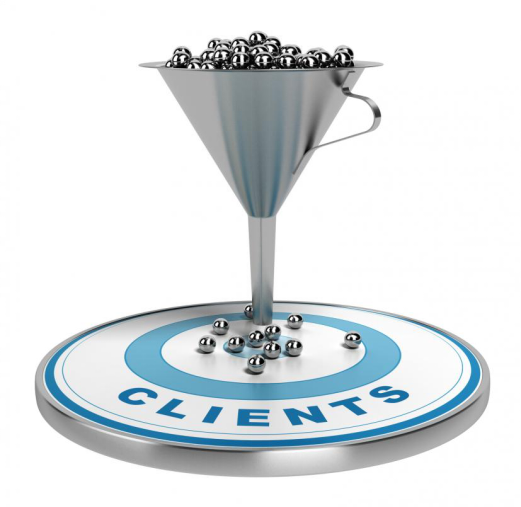If you’ve been trying to learn and read up on anything related to marketing analytics, chances are, you’ve come across terms related to “funnels”. If you’re wondering what they’re about and how they work, then this is the blog for you.
What are Marketing Funnels?
A marketing funnel is a tool that helps in the visualization of a potential customer’s journey from the first stage of awareness (regarding a business’s offerings) all the way to advocacy.
Marketers seek to throw out a large ‘net’ in an attempt to attract as many leads as possible. The goal then becomes to nurture prospective customers and attempt to lead them further down the funnel.
Ironically, the funnel represents the reality of lead generation: not every potential candidate will turn into a customer; just as a funnel narrows down the line, so will the number of people who will end up buying your product or service.
It is worth mentioning that there isn’t a single agreed upon ‘marketing funnel’ version. It varies from business to business with some having fewer stages while others referring to these stages by different names.
In this blog, we’ll seek to discuss the advantages of the most common one out there.

Stage 1: Awareness
The first stage underlines the basic function of any marketing campaign: to create awareness regarding the company’s offerings. Your campaign will help to introduce your business to strangers through customer research and discovery. During this initial stage, your primary focus will be toward attaining thought and trust leadership via advertising, webinars, social media, viral campaigns, content creation, events, and more.
At this stage of the funnel, the value of your product is still unknown; customers won’t be engaged by sales material or product specifics. Instead, try to establish value through educational promotions. Here, customer information is gathered as leads are pulled into the first phase of the funnel. It’s interesting to note that 65% of businesses claim that lead generation is their biggest marketing challenge which only emphasizes the need for developing creative marketing strategies.
Stage 2: Interest
Now that you’ve generated the leads, the prospects move onto the next stage. Triggered by a need to search for additional information, they start to learn about your company and its offerings via different forms which typically include:
- Conducting searches on Google
- Asking friends and family for recommendations
- Reading online reviews
- Physically visiting your store or
- Looking up the newspaper
Capitalize on this interest by sending content which addresses their needs. If your operations are related to accounting, shell out content that helps entrepreneurs manage their finances. If you’re in the marketing business, then the content should revolve around social media advertising, SEO, link building, and other strategies.
Not only does this show that you can provide solutions to their problems, but it also enables you to introduce your positioning and develop a relationship.
Additionally, you can conduct keyword searches to get an idea of what your content should revolve around. This also helps discover which search terms receive the most attention in your niche. This allows you to create appropriate content, the importance of which is highlighted by the fact that 93% of B2B companies believe that content marketing is far more effective than traditional marketing strategies when it comes to lead generation.

Stage 3: Evaluation
At this stage, you’ve convinced potential customers regarding your product’s value and its ability to deliver. Such leads are also referred to as marketing qualified leads. However, you’re not the only one in the industry providing such services which prompt the prospects to compare your business with the competition. The decision time will vary based on the nature of the product or service.
For example, the choice of having either Indian food or Chinese food is fairly straightforward and requires minimal time whereas offering managed IT solutions requires an investment costing thousands of dollars. Due to the differing time frames and value of the product, the prospects are more than likely to request for content during this consideration stage. A high number of competitors can lead to longer evaluation time, something experienced by 48% of businesses.
Let’s assume you are a fitness center. Your content can include:
- A workout regimen based on the customer’s physical structure
- A live webinar
- Informational blogs such as “How physical therapy can reduce chronic back pain” or “5 Simple exercises to gain body mass” etc.
The better the content, the higher is the probability of conversion.

Stage 4: Commitment
You’ve finally arrived at the stage where the potential customer makes a decision whether to purchase your offering or not.
The biggest hurdle at this stage typically appears in the form of negative feedback which can reduce the prospect’s motivation.
At such a point, work on making the potential customer feel confident in their decision to buy your product. Let’s take the previous example of a fitness center. Here, develop a case study showing a customer’s success story including before-and-after pictures along with testimonials. This can be related to either weight-loss or gaining substantial muscle-mass—whatever’s appropriate based on the client.
You can also offer discounts via emails which creates a sense of urgency, nudging them to make the purchase. Targeting prospects with content relevant to their needs along the marketing process yield a 72% higher rate of conversion.
Stage 5: Post-Purchase Behavior
Even though the sale has been made, don’t celebrate just yet. The post-sales process is equally as important as the rest of the stages.
Many businesses fail to develop and implement an effective customer loyalty plan which results in lost customers and a waste of marketing efforts. For many businesses, repeat customers is what brings in the real money. A welcoming onboard process, personalized attention, and access to resources play a crucial part in convincing the customer that they’ve made the right choice.
Certain models of the marketing funnel also include another stage beyond the purchase known as “Advocacy”. This is when the customers’ transition from just being customers to fans and advocates for the company’s products.
They completely ignore your competition and go out of their way to inform others regarding the benefits of your products. This is extremely beneficial for an obvious reason: referral marketing is one the most effective forms of marketing.
Wrapping It Up!
Understanding the marketing funnel enables you to turn an increasing number of leads into sales which is the core function of the entire marketing process.
Our content creation services in Alberta is one of the best when it comes to amplifying your online marketing efforts and ultimately finding, increasing, and converting web traffic into sales. Contact us today.


Leave a Reply
You must be logged in to post a comment.